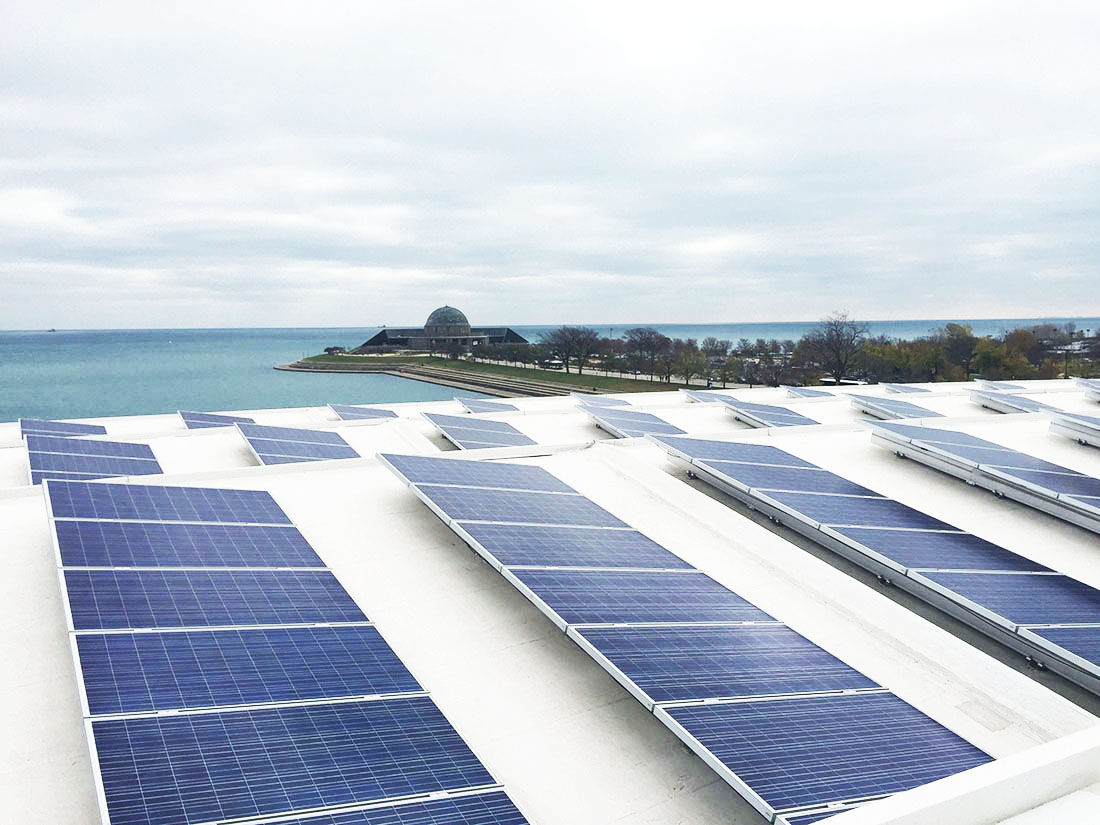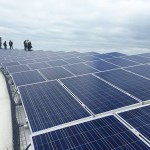By Amanda Koehn
Businesses don’t have financial incentives to transition to clean energy, and it’s limiting Illinois’ environmental progress.
Last week, The Energy Times held its first major conference here in Chicago, offering insights at a three-day series of speakers, panels and tours of energy efficient attractions. As someone with little knowledge of utilities and slightly more knowledge of sustainability, this is what I took away.
1. Historically in the U.S, the utility industry has moved slowly on energy efficiency—but that’s changing fast with smart grids.
The national rate of growth of electricity usage is in decline since the 2000s, said Ralph Cavanagh, co-director of the Natural Resources Defense Council’s energy program . The concurrence of the recession and improved energy efficiency explain this decrease.
“If you have an electric business model, that depends upon rapid growth in electricity sales in order to generate the capital needed to achieve a clean energy transition. That’s a huge problem,” Cavanagh said.
To remedy this, Cavanagh said utility companies’ financial health needs to become independent of increased energy use and look to energy efficiency and clean energy to limit expensive investments in peak load facilities.
ComEd is in the middle of a massive shift to bring smart grids to Chicago area homes and businesses. A smart grid is a digital system where users communicate directly with a system in their home, allowing better control over savings and efficiency. The shift means savings for businesses too, with better estimates of energy needs through the grids.
“If you believe in a clean energy transition and you want utilities to orchestrate all of that, you’d better make sure it’s more profitable than the alternative,” Cavanagh said.
Cavanagh said, to reduce effects of climate change, this transition needs to happen now. And some states are doing better than others.
2. Illinois is behind other states in efficiency incentives.
The clean energy transition has had “modest progress” in Illinois compared to others states, Cavanagh said. He pinpointed Hawaii, California and New York as states progressing the furthest in adopting clean energy.
“There is no reason why Illinois shouldn’t quickly jump up to that list,” Cavanagh said.
I reached out to Nick Magrisso, a policy advocate in the Chicago NRDC office, to explain why we are behind.
“There is a lot more the state could be doing to make sure we thrive in a clean energy economy,” Magrisso said.
Businesses are more likely to adopt sustainable practices when policies are adopted that give financial incentives, like tax credits and rebates, for adopting clean energy technologies. These can include energy efficient lighting and creating green energy jobs. Specifically, Magrisso said other states have been more progressive than Illinois in initiating policies that incentivize businesses to adopt clean energy initiatives.
In 2007, Illinois adopted renewable energy legislation that, according to Magrisso, created jobs. Illinois now has over 100,000 jobs in the clean energy economy.
Magrisso said we are due to up the stakes in promoting renewable energy. “Two years ago, Illinois ranked second in new wind installations,” wrote Magrisso in an NRDC blog post from earlier this year. “Last year, we did not add anything. And it was just announced that Illinois was overtaken by Oklahoma in total wind power after that lull.”
The NRDC and Mayor Rahm Emanuel support the Illinois Clean Jobs Bill—a proposed law proponents say could create another 32,000 jobs in clean energy per year.
3. But hopefully not for long. There will be a green energy shift and utilities will work with environmental groups to get it right.
“We are really at an important time in the energy future and see a huge potential…but it’s important to get the policies right and send the right signals to businesses,” Magrisso said. “The NRDC has a very strong vision of what that looks like, which we articulated in the clean jobs bill.”
“People from the environmental community need utilities to be successful in transitioning to clean energy,” Cavanagh said, adding that ComEd leaders are “enduringly committed” to doing so.
For example, ComEd has its own expansive energy efficiency proposal. The ComEd Future Energy Plan would further develop smart-grid technology throughout the northern Illinois area.
“We recognize that utilities are the most important clean energy investors in the economy,” Cavanagh said.
4. Along with the business leaders, action on the individual level is needed.
Individuals can lead the way as way as well. William Kamkwamba, inventor and author of the autobiography “The Boy Who Harnessed the Wind,” said activists and experts need to take an active role in educating others on environmental policies so they know what kinds of plans are best for consumers and the environment.
At 14, Kamkwamba—a conference keynote speaker— invented a windmill using bicycle parts, blue gum trees, and scrapyard pieces to power appliances in this family’s home in Malawi.
“It’s important to tell the outcomes of sustainable action,” in terms of how important it is to reduce energy use to combat climate change, Kamkwamba said. “Policies encourage [people] to adopt sustainable technology.”
“Some of it is public awareness and opportunity of how much money can be saved,” Magrisso said. “When it comes down to dollars and cents and we see investments, it becomes a no-brainer decision for them to make on an individual basis.”
5. The Shedd Aquarium is a local trailblazer for efficient innovation.
Chicago’s Shedd Aquarium, where more than 32,000 animals live, set a goal to reduce its energy consumption by 50 percent by 2020. Innovations so far include 913 solar panels, a rainwater collection system and LED lights. Different types of gardens surround the aquarium, which include a low-maintenance garden (which thrives on little water) and a compact urban vegetable garden. Smart building operators and engineers monitor the energy system so the building always operates at maximum efficiency.
“Energy use for large buildings is changing and we need to prepare for that,” said Bob Wengel, vice president of facilities at the Shedd Aquarium. “It saves money and saves our carbon footprint.”






